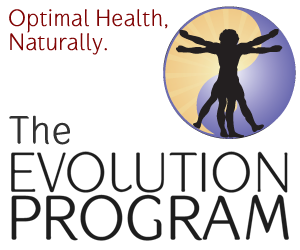Paleo Diet Traditions for the New Year
So, it’s the end of 2011, which was an interesting year and by all the signs, 2012 is going to be even more interesting. For the Paleo world, 2011 was the year the movement/diet/lifestyle (what ever you want to call it) really took off. And there are indications that the Paleo diet concept is becoming more widely accepted. A friend recently overheard a conversation in a store in which one person mentioned that she had just received “Wheat Belly” by Dr. William Davis, and was looking forward to reading it! As I reported on this site several CBS affiliate stations around the US had featured the Paleo diet or caveman diet in their health reports. Paleo Magazine was launched, and we had the first Ancestral Health Symposium and are looking forward to the next meeting scheduled for August to be held at Harvard Law School in Boston, MA. Because of the effectiveness of the diet on so many levels, great health and weight loss come to mind, there is no doubt that many more people will start to follow it this coming year. So is it too soon to start thinking about new Paleo diet traditions for the New Year?
There are many New Years traditions, many which involve food most of which involve attracting good luck for the new year. There is a terrific TV show hosted by Burt Wolf called “Travels and Traditions”. He had an episode about New Years traditions. I was only able to find a 2 minute portion on line, the text of which is below.
New York's Time Square ball from December 2007. Photo by Clare Cridland, image courtesy of Wikipedia.org
Our first holiday celebrations were used to mark a new year and were based on the sun and the moon. Today, however, we mark time by the electrons of cesium atom as it decays. When 9 billion,92 million, 31 thousand and 770 beats have been recorded, it’s time to wish everybody, Happy New Year! In New Your the announcement is made by a glittering ball, that slides own a pole, which reaches the base at midnight. The dropping ball is actually an old navy custom used in ports all over the world. The ball would drop each day at noon as a signal to ships in the harbor that it was time to reset their clocks.
The moment in time between the old year and the new year, when the past meets the future, is a dangerous moment, and we try to prepare for it by taking stock of our strengths and weaknesses, and making a plan for the future. We announce that plan because we believe that wishes made at that moment have the best chance of coming true. Hope reborn with the new year. A second later when the old year becomes the new year, is also a significant instant. Filled with superstition and elaborate rituals, it’s important to be fully awake and clear headed when midnight arrives. It’s the moment when you can consciously direct your fate and you should be in a good mood during the transition. The whole idea of a new years eve party is to establish a happy setting as the new year begins.
I would have liked to have had the whole video since Mr. Wolf goes into detail on why we eat certain foods on New Years Eve and on New Years Day. What he said basically is that in some cultures, the traditional way to ring in the and start the new year is to eat extravagant food on New Year’s Eve and to eat frugally on New Years Day. The reason for these traditions? On New Year’s Eve we hope for wealth in the New Year. Expensive foods like champagne and caviar represent how we would like to be able to eat in the new year. On New Year’s Day we eat foods that are less expensive and more down to earth so that the during the rest of the year we don’t exceed our income (or something like that). I don’t remember exactly what he said, but it is more or less correct.
People all over the world eat many different foods on New Years Eve and New Years Day. From the Food Timeline website:
Many people will “eat for luck”-they plan to eat special foods that, by tradition, are supposed to bring them good luck. Throughout history, people have eaten certain foods on New Year’s Day, hoping to gain riches, love, or other kinds of good fortune during the rest of the year.
So what sort of Paleo Diet Traditions for the New Year can we create?
Many of you will be glad to know that pork is featured prominently in many traditions because of the way pigs forage and they tend to be plump:
Sauerkraut in a jar. Photo by Bdubay. Image courtesy of Wikipedia.org
For people of several nationalities, ham or pork is the luckiest thing to eat on New Year’s Day. How did the pig become associated with the idea of good luck? In Europe hundreds of years ago, wild boars were caught in the forests and killed on the first day of the year. Also, a pig uses its snout to dig in the ground in a forward direction. Maybe people liked the idea of moving forward as the new year began, especially since pigs are also associated with plumpness and getting plenty to eat. However the custom arose, Austrians, Swedes, and Germans frequently choose pork or ham for their New Year’s meal. They brought this tradition with them when they settled in different regions of the United States. New Englanders often combine their pork with sauerkraut to guarantee luck and prosperity for the coming year. Germans and Swedes may pick cabbage as a lucky side dish, too.
Roast pork or ham with sauerkraut would be a terrific custom to adopt for the a Paleo diet tradition for the New Year. Don’t eat pork? Some eat Turkey….
In other places, turkey is the meat of choice. Bolivians and some people in New Orleans follow this custom. But other people claim that eating fowl (such as turkey, goose, or chicken) on New Year’s Day will result in bad luck. The reason? Fowl scratch backward as they search for their food, and who wants to have to “scratch for a living”?
Okay, so maybe turkey or chicken isn’t agood idea. How about fish?
Frequently, fish is the lucky food. People in the northwestern part of the United States may eat salmon to get lucky. Some Germans and Poles choose herring, which may be served in a cream sauce or pickled. other Germans eat carp.
So far the foods are generally Paleo in nature and would not be hard to adopt. But when it comes to sweets, well, that’s where the situation gets sticky…
Sometimes sweets or pastries are eaten for luck. In the colony of New Amsterdam, now New York, the Dutch settlers still enjoy these treats…In some places, a special cake is made with a coin baked inside. Such cakes are traditional in Greece, which celebrates Saint Basil’s Day and New Year’s at the same time. The Saint Basil’s Day cake (vasilopeta) is made of yeast dough and flavored with lemon. The person who gets the slice with the silver or gold coin is considered very lucky!
The rest of these traditions are decidedly non-paleo (except for the hog jowls and bacon)…
Black-eyed peas …… are part of one of New Year’s most colorful dishes, Hoppin’ John, which is eaten in many southern states. Hoppin’ John is made with black-eyed peas or dried red peas, combined with hog jowls, bacon, or salt pork. Rice, butter, salt, or other vegetables may be added. The children in the family might even hop around the table before the family sits down to eat this lucky dish. In Brazil, lentils are a symbol of prosperity, so lentil soup or lentils with rice is prepared for the first meal of the New Year. Thousands of miles away, the Japanese observe their New Year’s tradition of eating a noodle called toshikoshi soba. (This means “sending out the old year.”) This buckwheat noodle is quite long, and those who can swallow at least one of them without chewing or breaking it are supposed to enjoy good luck and a long life. Finally, Portugal and Spain have an interesting custom. As the clock strikes midnight and the new year begins, people in these countries may follow the custom of eating twelve grapes or raisins to bring them luck for all twelve months of the coming year!
So what Paleo diet traditions for the New Year can we start practicing? For New Years Eve it could be any type of food that you consider to be rare treats because of the the expense. My personal choices would be:
- Caviar since roe is decidedly Paleo. Eaten by the small spoonful, not on crackers.
- Expensive cuts of meat beef like prime rib, filet mignon or tenderloin, all grass fed, of course.
- Artichokes (i just love artichokes and they’ve become rather expensive lately)
For New Years Day I would have
- Scotch eggs with bacon
- Meat chili or lamb stew.
What sort of Pale Diet New Years Eve and New Years Day traditions would you institute? Please leave your observations below in the comment area.
HAPPY NEW YEAR from everyone at Paleo Diet News! Thank you for making 2011 a spectacular year. Let’s make 2012 the best year yet!
Fireworks at St Quay Portrieux, France. Photo by Axel Rouvin. Image courtesy of Wikipedia.org
Barry Cripps, Brian Carr, Cindy Hill and Lila Solnick





